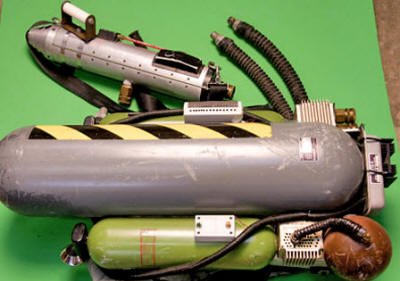|
by Amara D. Angelica June 6, 2011 from kurzweilai Website
the ALPHA neutral antimatter trap, as a container for antihydrogen
(credit: Chukman So,
© 2011 Wurtele Research Group)
Geneva, Switzerland CERN physicists have reported they created antimatter in the Large Hadron Collider and stored it in three vials.
An
international team of scientists in the ALPHA collaboration has
stored 309 atoms of antihydrogen, for almost 17 minutes - a huge
leap, compared to just 38 atoms for 172 ms (about two tenths of a
second) in a previous try.
The ghost confinement trap was reportedly not used at CERN
(credit: Sony
Pictures Entertainment)
OK, actually, the trap was developed at Lawrence Berkeley National Laboratory (Berkeley Lab), using a superconducting eight-pole magnet.
To make antihydrogen, the
accelerators that feed protons to the Large Hadron Collider (LHC) at
CERN divert some of these to make antiprotons by slamming them into
a metal target.
How the antimatter trap works: Antiprotons and positrons are brought into the ALPHA trap from opposite ends and held there by electric and magnetic fields. Brought together, they form anti-atoms neutral in charge but with a magnetic moment. If their energy is low enough they can be held by the octupole and mirror fields of the Minimum Magnetic Field Trap.
(Credit: Berkeley
Lab)
So what about using those matter-antimatter explosions for energy?
That’s 30 to 40 years away, condensed matter physicist Dr. Andrew Beckwith, Dept. of Physics, Chongqing University in China, told me, based on scuttlebutt from Berkeley Lab researchers. Good, just in time for the Singularity.
So will that solve our energy problems?
|



